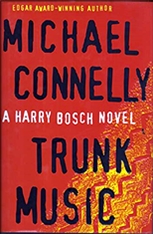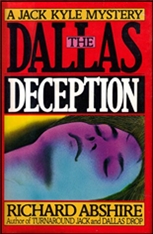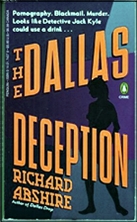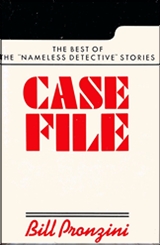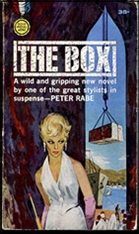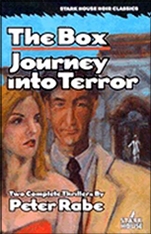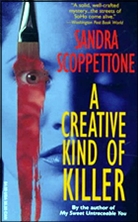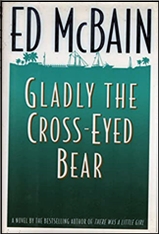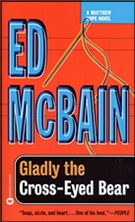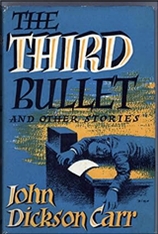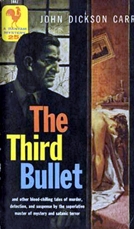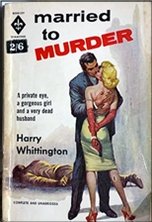Reviewed by TONY BAER:
MICHAEL Z. LEWIN – The Way We Die Now. Albert Samson #2. Putnam, hardcover, 1973. Perennial Library, paperback, 1984. Mysterious Press, paperback, 1991.
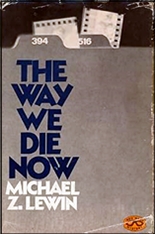
Albert Sampson, PI. A bit nebbish. Late 30s. Sleeps in his office in Indianapolis. Barely making it.
A mother calls on behalf of her daughter. A whiny, overbearing one at that. And looking for the cheapest sleuth in town. They found him.
Daughter’s husband Ralph just killed a guy. He’s in jail, facing manslaughter charges.
What happened is this: Ralph was as a security guard with Easby Guards. The company requires their employees to carry double barreled shotguns. It’s an image thing, really. But they are loaded for bear.
Ralph’s a Vietnam vet that got discharged after he lost his gourd in battle. He can’t find work and the only work he’s not willing to do is anything involving a gun. So of course this security job is perfect! Well, what happens is that Easby Guards has been seeking out PTSD discharged vets to hire. They’e framing it as philanthropy. But is there something more sinister happening?
Ralph is convinced to give the job a try. But the first night on the job, one of the tenants in the building Ralph’s assigned to tells him he’s scared a guy is gonna try to kill him tonight. Please protect me he pleads.
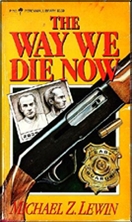
Later that eve, a menacing looking man knocks on the tenant’s door. The tenant opens it, screams to shoot when the man reaches for something under his coat. And Ralph does. His aim is true. The man dies, instantly.
The cops show. And the tenant says: I don’t know what happened. Ralph just went crazy and shot this guy for no reason. I never told Ralph to shoot. I never told Ralph I was scared of the guy, or that I’d been threatened.
Given Ralph’s psychiatric history, the cops figure the tenant’s story is probably right: Ralph just went bananas, shooting the stranger for no reason. Just like he did in Vietnam. Manslaughter.
Sampson takes the case on. But you wonder why. According to Ralph’s lawyer, it’s manslaughter now, and it’s still manslaughter if he proves he was told to kill the guy. So why bother?
The REAL reason should be this: ‘Defense of others’ is a defense to liability for an alleged crime that is in defense of a person other than oneself. It refers to a person’s right to use reasonable force to protect a third party from another person who threatens to use force on the third party. [See, for example, https://www.law.cornell.edu/wex/defense_of_others.]
Unfortunately, this doesn’t occur to Ralph’s lawyer or to Samson. What pisses me off a bit is when I’m a better lawyer that the lawyer in the book.
—
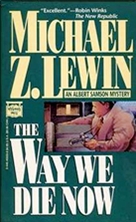
The book was okay. I like Albert Samson. And that itself is something. It’s tricky trying to write a contemporary detective novel while avoiding pastiche. Although we are precisely at this moment as far from this Samson novel as this Samson novel was from the Continental OP (50 years, to be exact). There is in fact some similarity between Albert Samson, Jacob Asch, David Brandstetter, Harry Moseby from Night Moves, Moses Wine, Harry Stoner, Jim Rockford, Travis McGee, Lebowski, Doc Sportello, John Marshall Tanner, and Elliott Gould’s Philip Marlowe.
Such that it may be fair to say that there’s a second archetypal detective. There’s the Philip Marlowe/Sam Spade classic PI’s of the 30s and 40s. Smoke and whiskey. Black and white. Knights errant in a world gone noir. And then there’s the laconic seventies dude detectives. As likely to be smoking a joint as drinking a beer. Wasting away again in Margaritaville.
The problem with the book is that, like its detective, it lacks ambition. There’s a heavy book inside it with some weighty stuff to explore and possible vindication of his client. Yet Samson settles for mediocrity. Like Lebowski says, forget it dude. Let’s go bowling.
